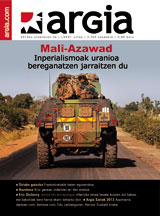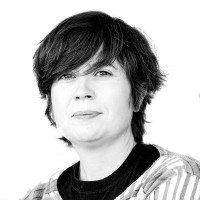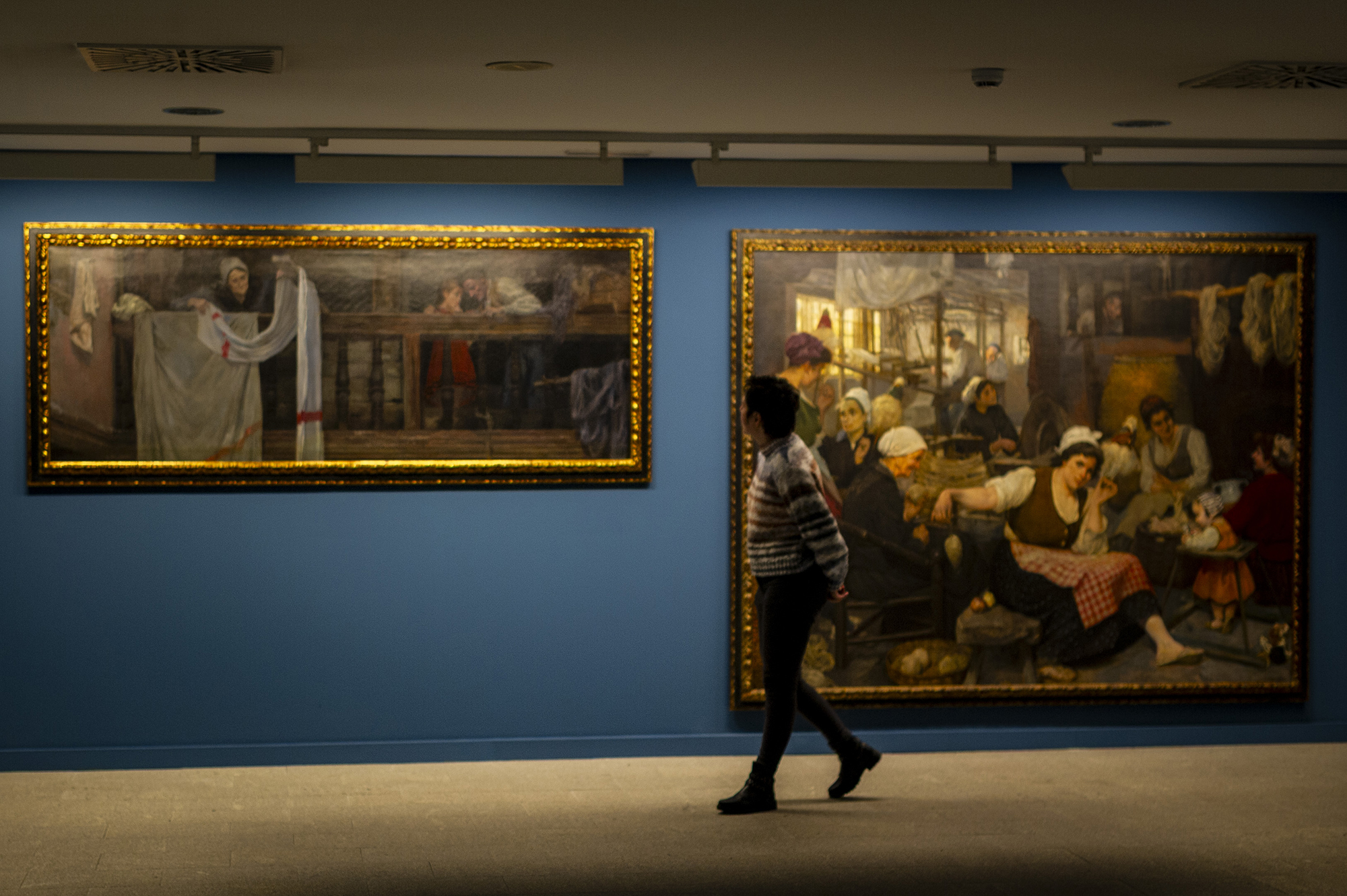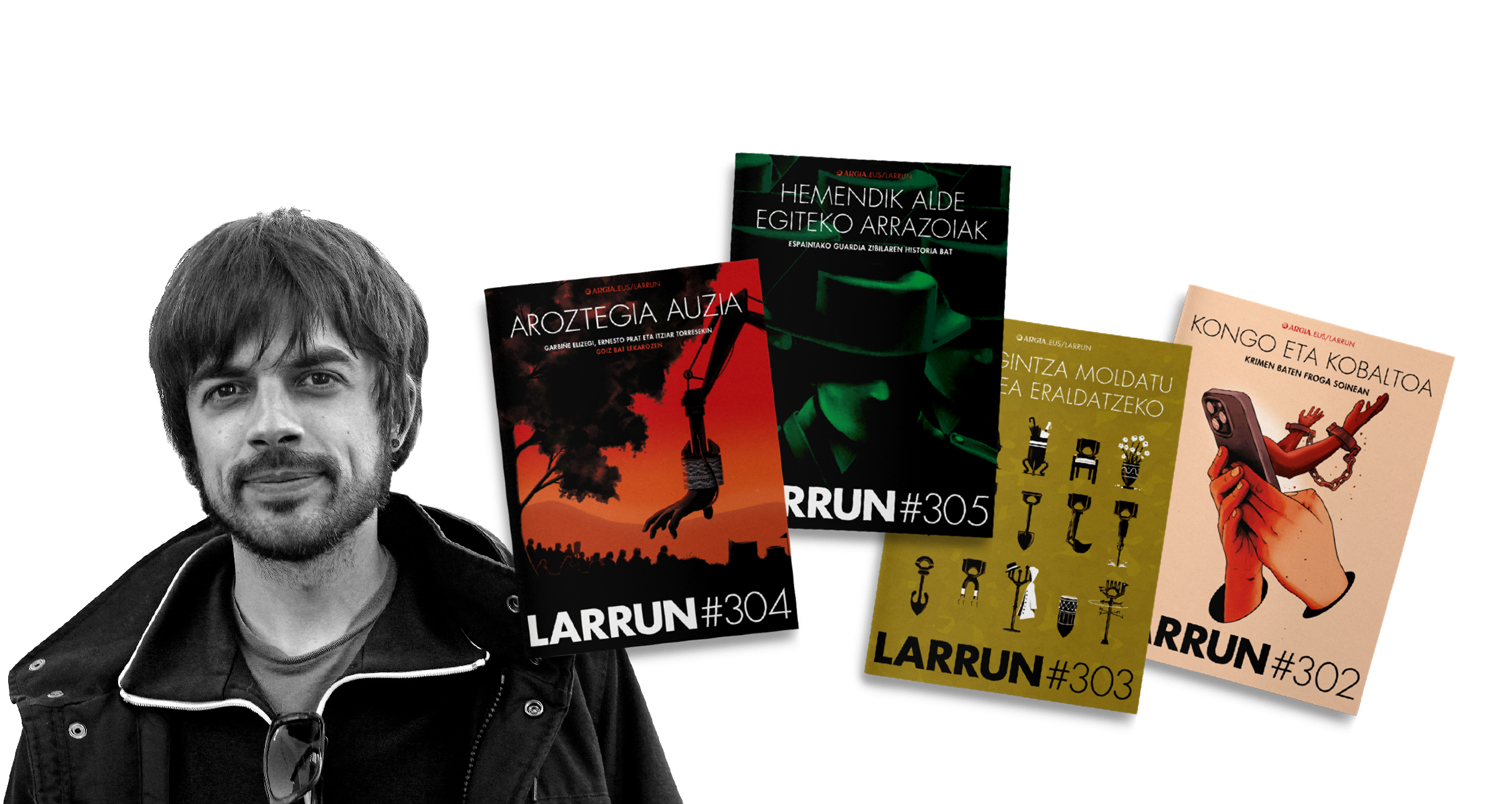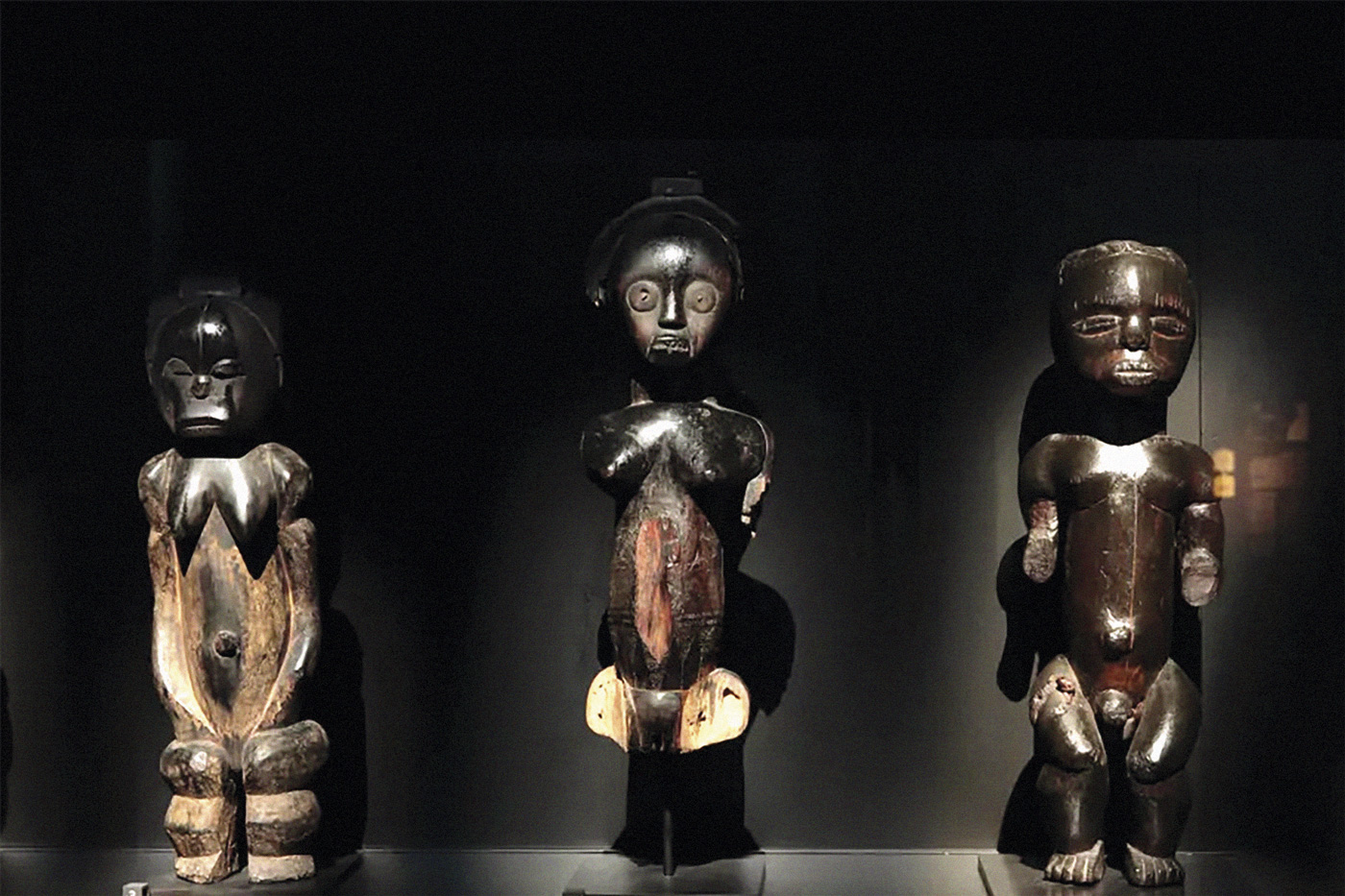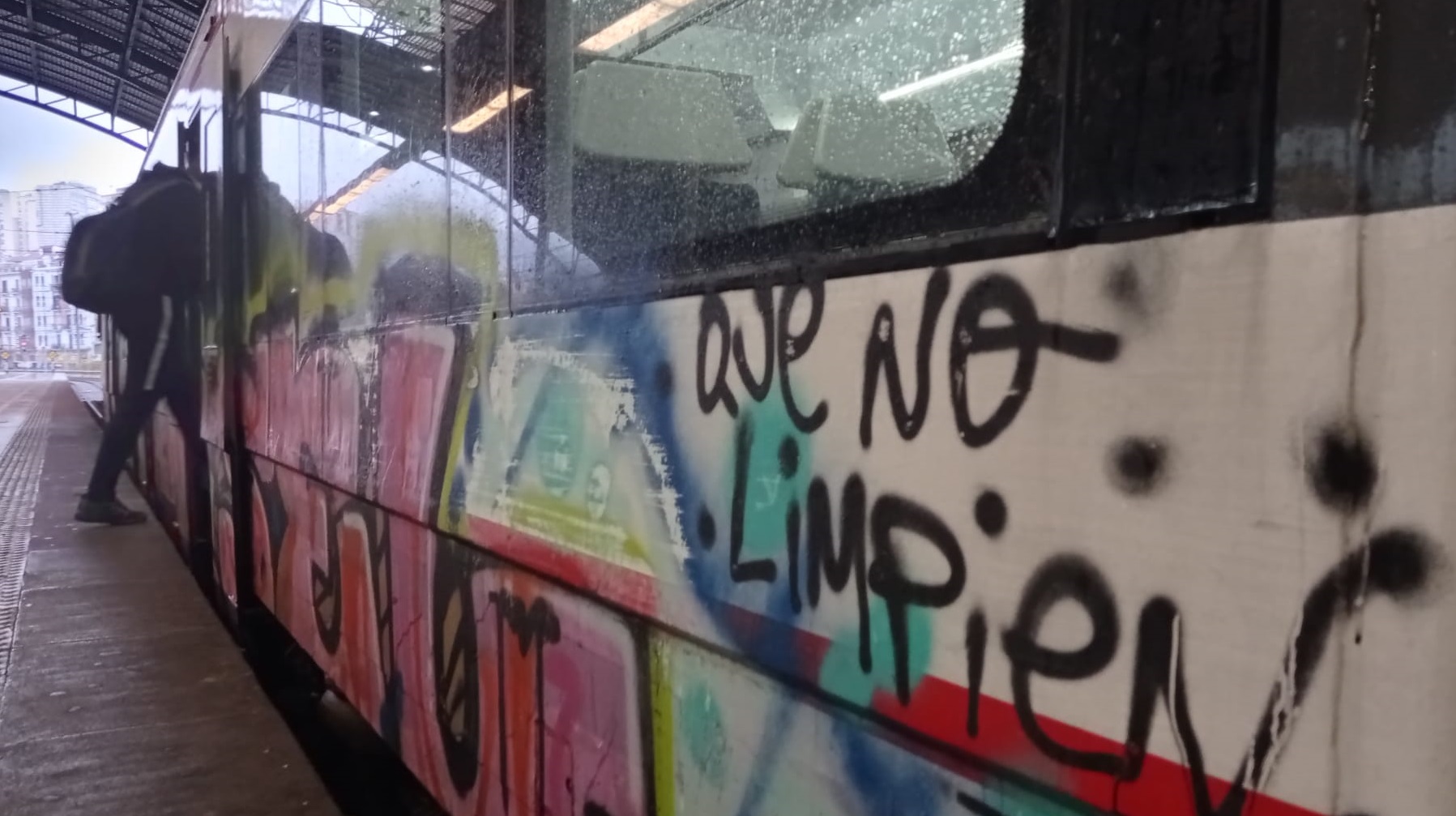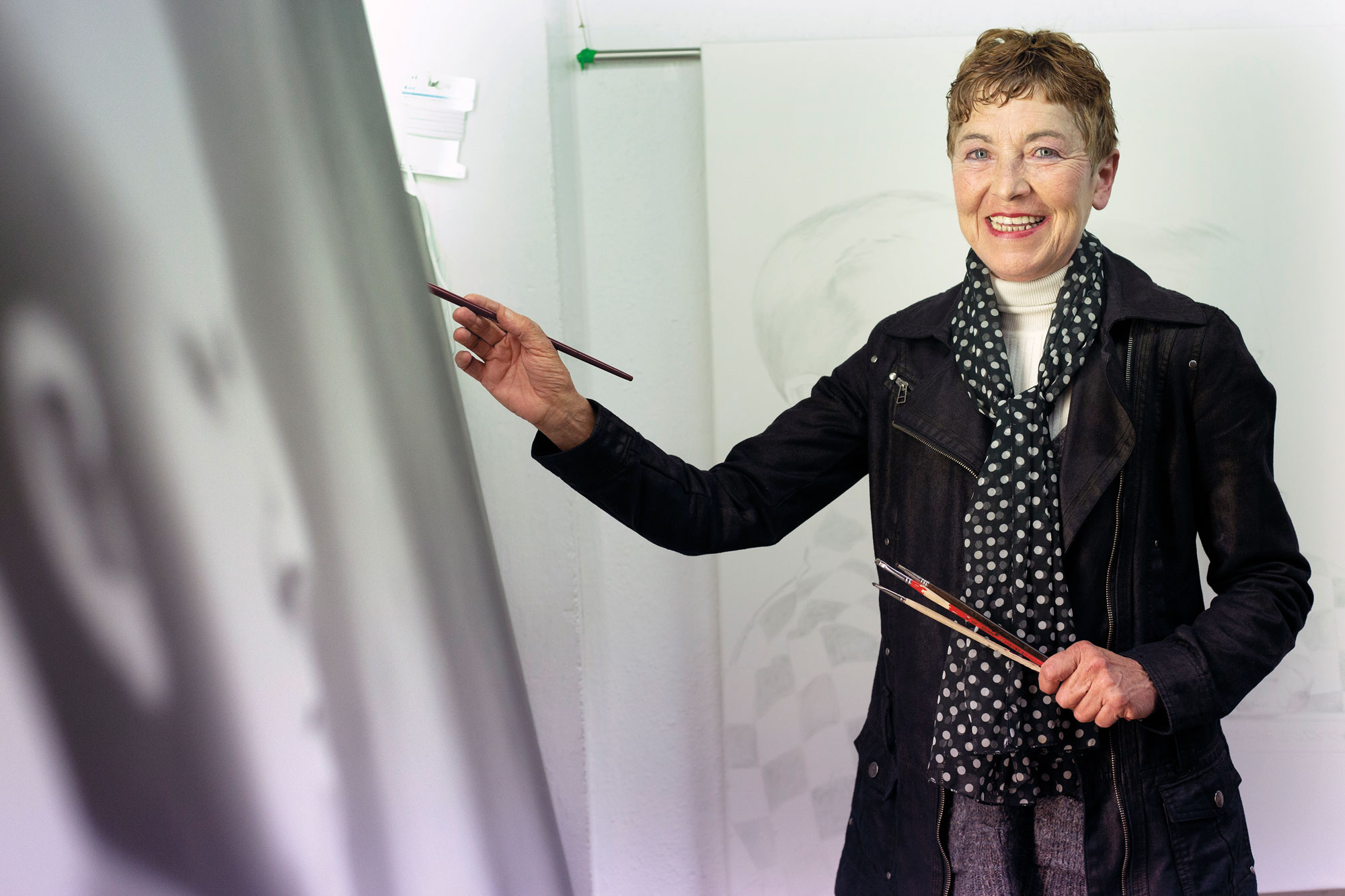"I look for ways to hear the word of the people, in art and in anthropology"
- Any excuse would serve us to knock at the door of Eric Dicharry, a creator with so many edges. Its mention can be found in many areas. Through his work as an anthropologist and researcher, we were given the way to the performances performed at the Museo Vasco de Baiona and the exposed facilities.
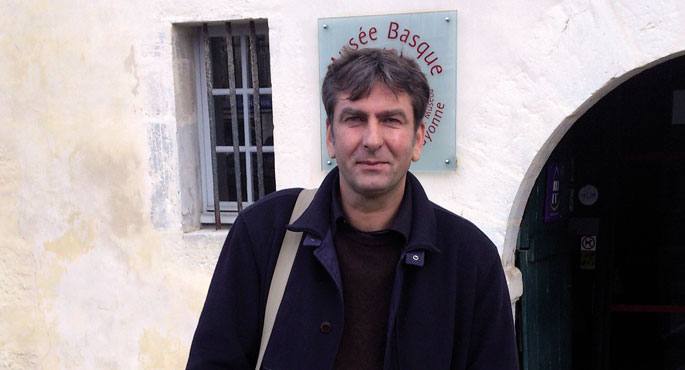
The Mugetak exhibition, created by you, can be visited until recently at the Basque Museum of Baiona. What has been your primary purpose?
My main idea has been to reinterpret the Basque space and time, and for that I thought it appropriate to take the path of the axe. The performance I did in the Argialdea hall, and the installation itself was made expressly for that space. I put five axes hanging in the hole that's in the middle. The first one is in the middle, because I read in an archeological magazine that they threw axes into the cromlechs, because they had prophylactic capability. That is, the space of the cromlechs was dedicated to the dead, but the axes were to protect the living. To highlight the transversality, I have given it in the center of the círculo.Usamos that word often, but it is not so easy to define, after all. All those who have gone through this facility carried out the transversality. Jorge Oteiza also departed from that point, and so I put his books in the window of the installation.
The other four put them in to delimit the space.
In the past, pastors used the axes to delineate the space of the cage or the wave, such as the cedar that was thrown at the four sides and placed where they fell. I chose another place. The movements of the pastors in the Basque mountains were made by me on the beach, imitating those limitations of the pastors, and I put the photos I made in the
installationn.Las photos had been made by yourself.
I took my son to take pictures. Then, when I came to the Basque Museum in Baiona, I intended to put the sculptures on the floor, but looking at the structure of the room, I put the axes in the air, which is more spectacular. On the other hand, the axe is a big impact icon.
Have you understood how you wanted?
A journalist asked me if I wasn't afraid to use this emblem. I answered no. In short, the axe is a Basque instrument that has been used for 4,000 years. But the question had something very interesting, and I explained to him, when he asked me, that the symbol was a sign that it had been manipulated over time and that was what I wanted to stress. Here's an axe, but no snakes. In a way, I would compare it to the sword of Damocles.
Terrorism is the sword of Damocles for democracy, or this can be seen. Terrorism comes when the word of the people is not respected, precisely because of a lack of respect, and we have to see if we can do something. I look for the way to hear the word of the people, as an anthropologist and as an artist.
He has also represented the circle of Cromlechs, taking advantage of the structure of the room.
It would be interesting to carry out real work on the circle, to analyze its influence on our Basque society. The circular shape is also very important in the masks, as it limits the space. In the afternoon there is always a game, and the limits of this work are circular. In pastoralists, too, that was the case before, and if we look at it, we will find many declinations. Dances are also circular. The same could be said of current customs. I lived outside, I was in Greece for seven years when I was young, and upon my return I realized that there were some particularities here. For example, when a party is held in France, everyone is installed next to the bar. Here, on the other hand, no. This is where vessels are stitched and circles are formed. I think it is very interesting to underline this.
Is peace also round?
I see peace as a stone house, and everyone will have to bring their stone to peace. As an artist, I wondered what he could contribute to the peace process. That's how the idea of installing it came about.
You are antimilitarist.
My grandfather had been paralyzed during World War I, couldn't move. I have seen and understood very closely what the conflict is, how its footprints are. I have also learned a great deal on my travels, for example in Lebanon. I've also done the installation for that. When young people come here, they put the questions. For example, if axes are true. Or why I haven't put those in cardboard or plastic. The workers here use my speech to explain to the young, and they're told that war is not a game, and it's afraid, of course, that the axes will fall. At the same time, its relationship with the sword of Damocles is also appreciated.
How do you see the peace process in the Basque Country?
I believe that terrorism has been a good excuse for politicians, who every time they wanted to win votes took terrorism out of their pocket. Now the same is true of peace. Everyone agrees, they are very happy with peace, but things are not moving forward. The plenary session in Aiete was a year ago, and after a year we see no major changes. Prisoners of eta imprisoned in Donostia-San Sebastian prison remain dispersed. Television and the media are like cheeses soufles. When there's one thing, thousands of articles and news come out, and then the plof. Peace is, as you can see, a new excuse.
Even through art, you have proposed to give a push to peace.
I call the artists. Because it is always said that art and politics are two fields, that you have to differentiate them. But here, in the collection of the Basque Museum of Baiona, to introduce a work of this kind, the opinion of politicians is needed. And then the speeches that are heard are not the same.
You're a detective. You have analyzed the Basque humor, the masks, the ecology of education, the improvisation of bertsolarism... How have you come to the art world?
I'm a researcher by profession. I started ten years ago. I do exhibits, but I try to escape every year. In the art world, the gift of ubiquity is now in the mouthpiece. It's important for artists to be in five or ten places at a time. And that's crazy. I also fight against that. I try to delve into my issues, and when I get to the core, I decide if the time has come to show my work. I don't know when I'm going to do the next exhibition, but I'm at least trying to take time. As Wittgenstein said, it is important that everyone takes their time. And throughout her life, she published just one book. Unique but known. I think we have something to learn from it.
You’re passionate about philosophy, there’s nothing to do with the books you’ve used in performance and exhibition.
I try to drink from various sources. It's important to me, because I don't want to stay in one camp. It is essential for me to cover many areas. In my installation and performance, philosophy is present, literature, music, photography, video...
What kind of mind do you have to understand and collect so many areas?
When you join everyone, you build your self. Media tells you as usual, you're bertsolari, or writer, or whatever. They love the labels, and it's very difficult for me, because I don't give myself any labels.
You should say you're a creator.
Yes. When I put on the shoulder of the anthropologist, I also research the creative process. When I worked in the theater, when I studied the Masks, that was my theme. The same thing that when I studied the world of Bertsolarism, and then when I studied the city or I got into humor, that was the core. And now, I work with a theater company and study the creative process. My reason is to have the ecology of creation. Because within creation we have to take into account the context of creation, work and reception. In education, I also used these concepts and theoretical molds, that is, the allosteric model. In a nutshell, if you change the environment of a protein, the same protein also changes. I try to apply it. Once all articulated, it's simple. It's easy on its own. The hardest thing is the articulation.
What is your next project?
In my next book, I'm going to talk about the influence that screens have, and that's where my artistic work starts. We must stress the importance of our online travel, its impact, its importance, its outcome. These virtual trips actually live later. We are built on our relationships with the environment. My son sometimes responds to me with an advertisement in his mouth. I once told him: “Your brain is built, after all, with advertising.” We're not too aware of the impact of screens. Not enough research is being done.
Did you start doing it?
Now, my wish is to translate all the research texts I have written into Basque. But for that I will have to look for a subsidy.
Last week, during the blackout, seeing ourselves vulnerable, we began to investigate many people in order to understand what happened: how does the infrastructure that transports electricity work? Why is it getting old? I am fascinated by the physical phenomenon of electricity... [+]
Eskultura grekoerromatarrek bere garaian zuten itxurak ez du zerikusirik gaurkoarekin. Erabilitako materiala ez zuten bistan uzten. Orain badakigu kolore biziz margotzen zituztela eta jantziak eta apaingarriak ere eransten zizkietela. Bada, Cecilie Brøns Harvard... [+]
Behin batean, gazterik, gidoi nagusia betetzea egokitu zitzaion. Elbira Zipitriaren ikasle izanak, ikastolen mugimendu berriarekin bat egin zuen. Irakasle izan zen artisau baino lehen. Gero, eskulturgile. Egun, musika jotzen du, bere gogoz eta bere buruarentzat. Eta beti, eta 35... [+]
This text comes two years later, but the calamities of drunks are like this. A surprising surprise happened in San Fermín Txikito: I met Maite Ciganda Azcarate, an art restorer and friend of a friend. That night he told me that he had been arranging two figures that could be... [+]
On Monday afternoon, I had already planned two documentaries carried out in the Basque Country. I am not particularly fond of documentaries, but Zinemaldia is often a good opportunity to set aside habits and traditions. I decided on the Pello Gutierrez Peñalba Replica a week... [+]









